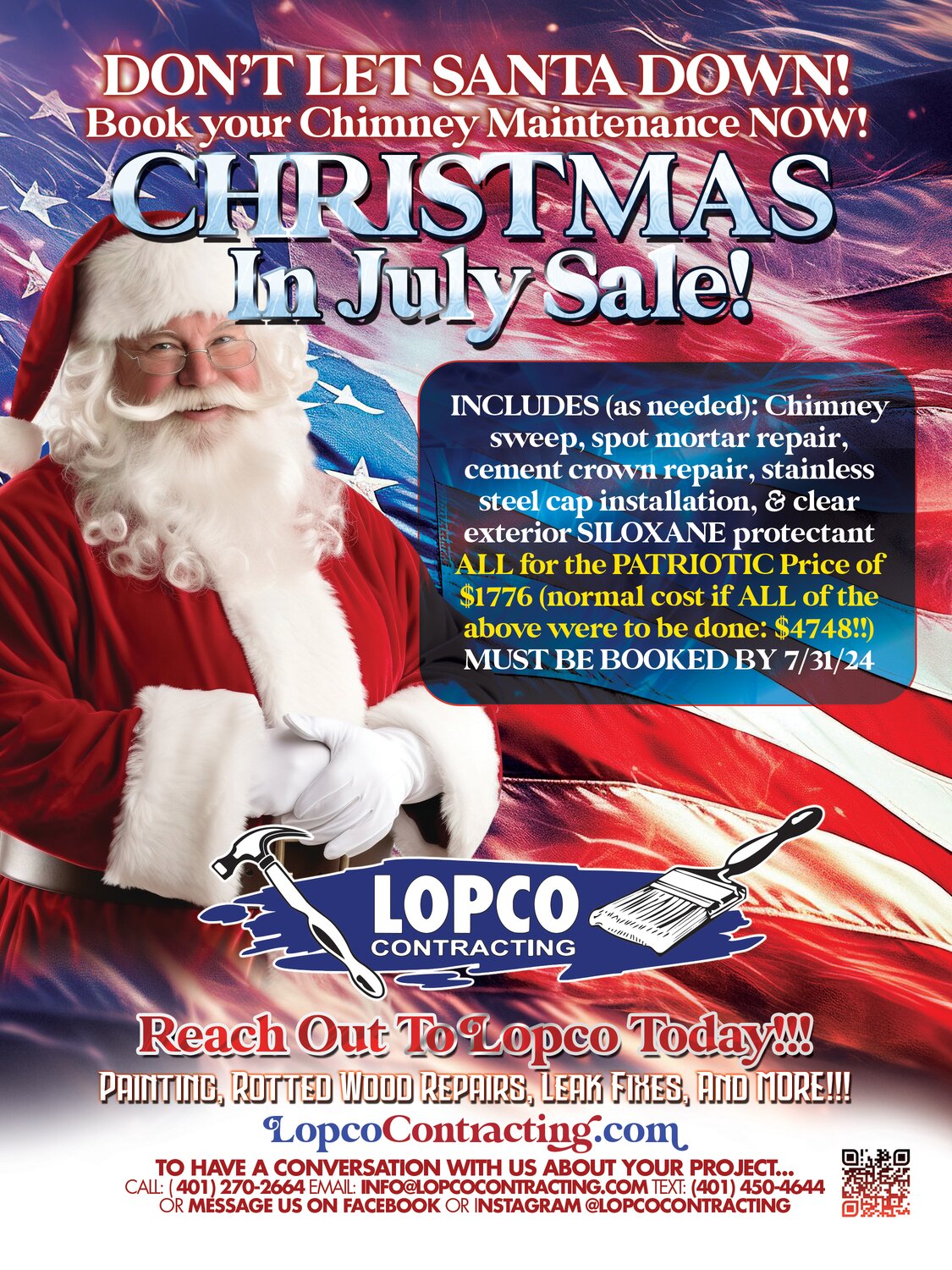Ask an Expert
My name is Tom Lopatosky. I'm the President of LOPCO Contracting (www.LopcoContracting.com) and I'm honored to have the opportunity to talk to you about home improvement on a monthly basis. I love answering your questions! Please send them to tom@LopcoContracting.com or call 401-270-2664. Thanks in advance for taking the time to read this column!
Why Does Paint On Exterior Wood Surfaces Peel?
There certainly are a wide variety of items related to home improvement where if you asked the opinion of a professional as to ‘why’ something was occurring (or not occurring) you would receive a differing answer from every individual you asked.
The reason why paint on wooden exterior surfaces peels falls right in line with this paralleling axiom:
Ask 10 DIFFERENT people, get 10 DIFFERENT responses!
The reality of the situation (of course in MY mind) is that there are only a finite number of reasons – barring few exceptions - that paint could possibly peel…
- Moisture - Although this is the easy ‘default’ answer for peeling exterior paint on wooden surfaces, it is often provided in instances where moisture is actually not influencing the paint to peel. The rationale is certainly viable as moisture getting behind the wood surface and forcing its way out through the paint coatings is definitely something which happens quite a bit (though not as much as some may lead you to believe!).
- The wood not being porous enough to properly absorb the paint coating - Depending upon how dense the wood is, the grain of the wood itself may be too tight to allow paint (or stains for that matter) to properly penetrate. When this is the case, a methodology of correction that involves “roughing up” the wood needs to be introduced or else the peeling will continue to occur. Many falsely believe that sanding will help to rough up the wood enough to allow proper penetration, and while this may indeed be true, using too high of a sanding grit will actually have the opposite effect and ‘smooth out’ the wood (making it even more challenging for a product to penetrate) and put you back to square one.
- Mill glaze - This is particularly synonymous with wood shingles & clapboard that have come of the mills at various points since the mid-1980s. Mill glaze is a thin layer of wax, unable to be detected by the naked eye, which is embedded in the fibers of the wood during certain manufacturing processes. When this happens, it will be impossible for any paint or stain coating to properly penetrate the wood and often will result in paint peeling in “sheets” at some point in the future.
- Intercoat adhesion - Sometimes when paint peels back to the previous layer of paint, there is what is known as an intercoat adhesion challenge occurring where there is something that is coming in between the old layer of paint and the new layer of paint and preventing the new paint from properly ‘biting’ into the old paint. It could be chalk or dirt, grime, or some other contaminant, but what most often leads to this happening is a surface that was not cleaned as properly as it probably should have been prior to the next coating being applied.
- Painting on top of a higher sheened paint, or directly on top of an old oil coating with a more modern acrylic coating, without proper prep - Although this type of exterior peeling is still something we run into, it is one of those issues of peeling that we don’t quite see as often these days in comparison to in the mid-1990s when we first started out in business. When converting a surface from a higher sheened paint to a lower sheened paint, or from an oil coating to a latex/acrylic/waterborne coating, there has to be some type of proper surface preparation (usually some type of combination of sanding & priming) to allow the newer coating structure to properly “take”.
While there are other reasons why exterior paint on wooden surfaces can peel, these are the ones that we tend to run into the most.
If you have paint on an exterior surface that just does not seem to stick and you cannot for the life of you figure out why, reach out to our office and set up some time to chat.
The chances are that we have seen the challenge before and know how to navigate it.
After all, if you are going to offer a 5-year warranty on something (as LOPCO Contracting does), particularly something as volatile as paint sticking on an exterior wood surface, you had better be aware of as many pitfalls as possible!!
About Tom Lopatosky
Tom Lopatosky has run his own RI-based painting and repair business since 1995; LOPCO Contracting – the "Personable, Particular Professionals" – specializes in exterior & interior painting and carpentry. Recently LOPCO Contracting was named ‘RI's Finest Painting Contracting Company’ by ShopInRI Magazine. In 2013, Tom was named “Humanitarian of the Year” by the Painting and Decorating Contractors of America (PDCA) and a “40 Under 40” award winner by Providence Business News. He is a member of both PCA (Painting Contractors Association) and RIBA (Rhode Island Builders Association). Tom has often had weekly ‘Home Improvement Tips’ that have aired on the radio on 630 WPRO AM and on television on WPRI 12. You can catch Tom LIVE on the radio EVERY Saturday, 2pm-3pm, on 630 WPRO AM (99.7 FM) during his weekly ProTalk Home Improvement Radio Show!


















Comments
No comments on this item Please log in to comment by clicking here